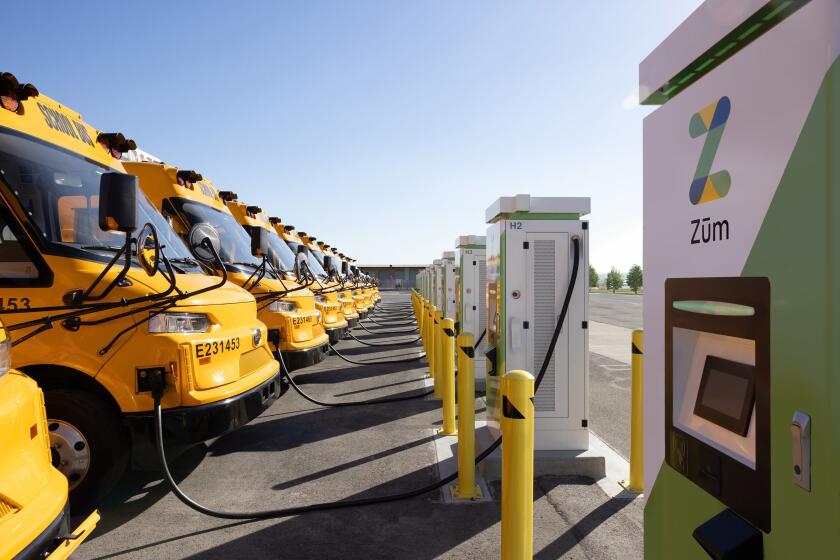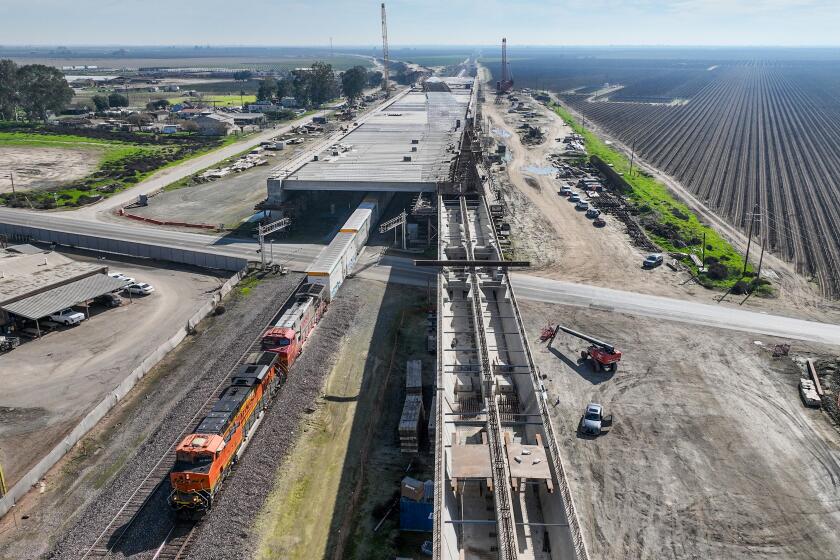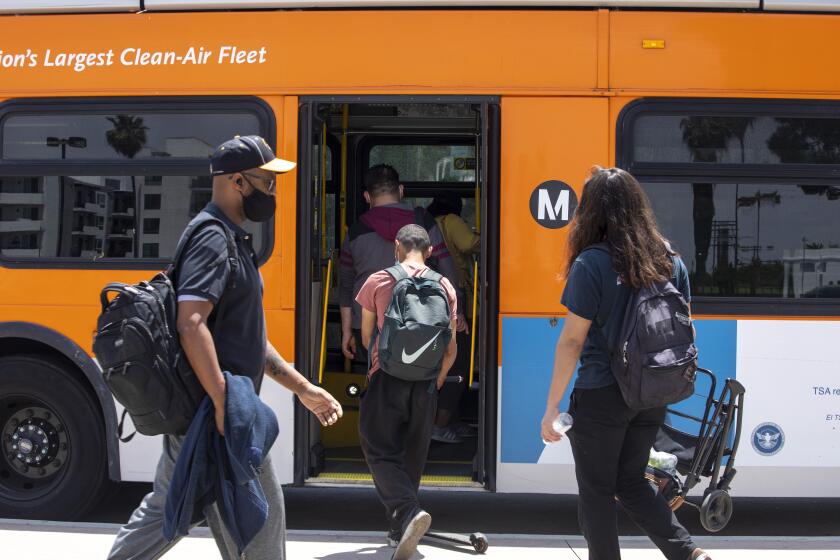Cool Hand : L.A. Subway Crane Operator Is a Study in Concentration
“I operate the biggest damned crane in L.A.,” Tony Maes said with a delighted grin. “And L.A.’s a pretty . . . big place.”
The machine Maes runs--a 230-ton Manitowoc crawler crane--may not be the biggest. That’s open to question. But it is one of the most imposing pieces of equipment being used to construct Los Angeles’ new subway system. Maes is proud of that, and he likes to talk about it.
“I’m a young, single, good-looking Mexican with a zeal for life,” he said the other day as he swung into the cab of the massive crane, parked beside a subway access pit at 5th and Hill streets. “I’m good at this.”
Maes pushed a button, and the crane’s big Detroit Diesel engine burbled into life. His hands fluttered across the forest of control levers, and a huge hydraulic piston at the end of the lift cable rose slowly from the ground and began to swing through the air.
Winch controls raised and lowered the load. Turntable controls swung it in a circle. Boom controls moved the load closer or farther from the cab. Maes explained that the art is to initiate all three movements simultaneously in a smooth, constantly changing arc.
“It’s a challenge--to become better, to improve,” he said. “A push cat is on the ground. A backhoe is on the ground. But a crane is in flight--up, down, in, away, left, right. It’s like painting a painting.”
Maes, one of three crane operators who work shifts at 5th and Hill--and one of about 1,625 workers employed on the subway project--has been on the job for several months now. He expects to continue working there for another year or so, when his job will be completed. The 35-year-old Ventura resident commutes to work each day on a motorcycle.
100-Foot Boom
His crane handles loads ranging from a few pounds to more than 30 tons. Most of his work involves lowering construction equipment to the men below, and hauling it back out again when they’re finished. He also unloads trucks and moves gear around the work yard, which is easily spanned by the crane’s 100-foot-long boom.
The piston he was moving the other day slid gently out of sight as he lowered it into the access pit that leads to a vast, underground chasm that is slowly evolving into one of the four subterranean stations being built for the initial 4.4-mile segment of the Metro Rail Red Line subway system.
Maes couldn’t see the load any more. A tunnel worker, using a series of hand signals, served as the crane operator’s eyes, guiding Maes as he maneuvered the piston so that it could be inserted into a cylindrical digging shield that will be used to excavate another stretch of the subway’s twin tunnels.
During the insertion process, which took almost 10 minutes, Maes’s eyes never left the man’s hands.
“You’ve got to concentrate,” he said. “An accident can happen so fast. And you’ve got to have confidence.”
‘Ran the Streets’
Maes is the first to admit that the confidence wasn’t always there. As a youth growing up in a tough minority neighborhood, he said he “ran the streets of San Francisco” as a boy, “smoking pot, drinking booze.”
Maes said things didn’t improve much with a subsequent stint in the Navy.
“But somewhere inside, I knew life wasn’t supposed to be like that,” he said. “I knew there was a creative, responsible person inside of me.”
Maes said he was working as a roughneck on an offshore oil platform off Point Conception when he started watching the platform crane operator.
“One day, I asked him how to operate the thing, and he showed me how to start it,” Maes said. “When he went to lunch. I climbed in there, started it up, and began to practice.”
Easy Does It
With practice came skill, along with the realization that a big crane is an extremely dangerous piece of equipment.
“Every time you get in that seat, you’ve got to remember that you’ve got a chance to screw up,” he said. “You can misjudge what the machine can handle. Or what you can handle. Try to move too much, or too far, or too fast. Maybe tip the whole damned thing over. People can die if you screw up.
“There are three kinds of crane operators,” he said, flashing another grin. “There are those that are just crane operators; those that are good crane operators; those that are hot crane operators.
“I happen to be of the hot variety.”
More to Read
Start your day right
Sign up for Essential California for news, features and recommendations from the L.A. Times and beyond in your inbox six days a week.
You may occasionally receive promotional content from the Los Angeles Times.






